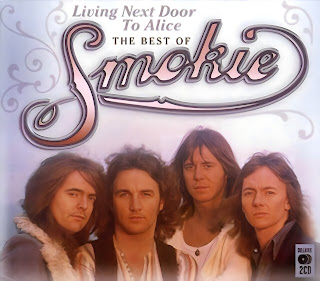Billy Idol: Billy Idol LP (1982)
Billy Idol
Album: Billy Idol
Released: July 16, 1982
Recorded: 1981–1982
Genre: Rock, new wave
Album: Billy Idol
Released: July 16, 1982
Recorded: 1981–1982
Genre: Rock, new wave
Billy Idol is the self-titled debut studio album by English rock singer Billy Idol. It received positive reviews from music critics and was a commercial success.
The lead single, "Hot in the City," peaked at number twenty-three on the Billboard Hot 100 chart. The second release, "White Wedding," reached number three on the Mainstream Rock chart in 1983.
Billy Idol
Billy Idol was at the forefront of the punk music scene in London, England. He started out as the guitar player in a band called Chelsea. Then he fronted Generation X, who had some success in the UK, delivering three albums in four years. Idol left the band in the spring of 1981, went solo, and moved to New York City.
 |
| Billy Idol |
From there, he recorded a four-song EP called Don't Stop. One track was a cover of Tommy James & the Shondells' hit "Mony, Mony." It stalled at number 107 in the US but later charted on a live release from his Vital Idol album. A remixing of the Gen X tune "Dancing with Myself" broke through in the American market. This track was added to Idol's debut album.
Hot in the City
Don't be afraid of the world we made
On a hot summer night.
"Hot In the City"
 |
| Billy Idol |
The first song released from his debut album was "Hot In the City." Idol wrote about running wild and free in New York City on a summer night; he believed his cover of "Mony, Mony" stalled because of the packaging. The cover art showed him with spiked hair and his trademark snarl. Initially unfamiliar with Idol, program directors didn't play the tune. The photo for "Hot In The City" only presented an overhead shot of a city street. The ploy worked. The track charted at 23 in the US and 58 in the UK. In the released version of the song, Idol shouts, "New York!." In other versions - recorded for various radio stations - he calls different cities, such as "Amarillo," "Boston," and "Minneapolis." Video There are two music videos for "Hot In The City." In the 1982 version, a girl walks into a record store, picks up a Billy Idol record, and the song starts to play. What follows is a montage of New York City scenes interspersed with stock footage of nuclear bomb tests. MTV banned the follow-up 1987 clip because Idol's then-girlfriend, Perri Lister, was bound to a cross toward the end of the video. White Wedding "White Wedding" is not about Idol's actual little sister. "Little sister" is slang for girlfriend. It's about someone the singer loves marrying someone else. On VH1 Storytellers, Idol explained his sister was getting married when he wrote this, but her wedding only gave him the idea for the song. It's an anti-marriage track, but people still play it at weddings. Video
Billy Idol The video for "White Wedding" launched Billy Idol to stardom. The director was David Mallet, who had worked with Queen and David Bowie. Mallet said of Idol in the book I Want My MTV: "In those days, he was the greatest looker and mover since Elvis. Before 'White Wedding,' nobody would have admitted that was even possible. One look at that video, and they got him." The concept is a "nightmare wedding," a Goth guy (Idol) marrying an ordinary girl. The bride is Perri Lister, Idol's real-life girlfriend at the time. Idol forces a wedding ring made of barbed wire onto Lister's finger and cuts her knuckle. Lister insisted her knuckle be cut for the scene to appear more realistic. MTV removed this scene from the video. |





Comments
Post a Comment